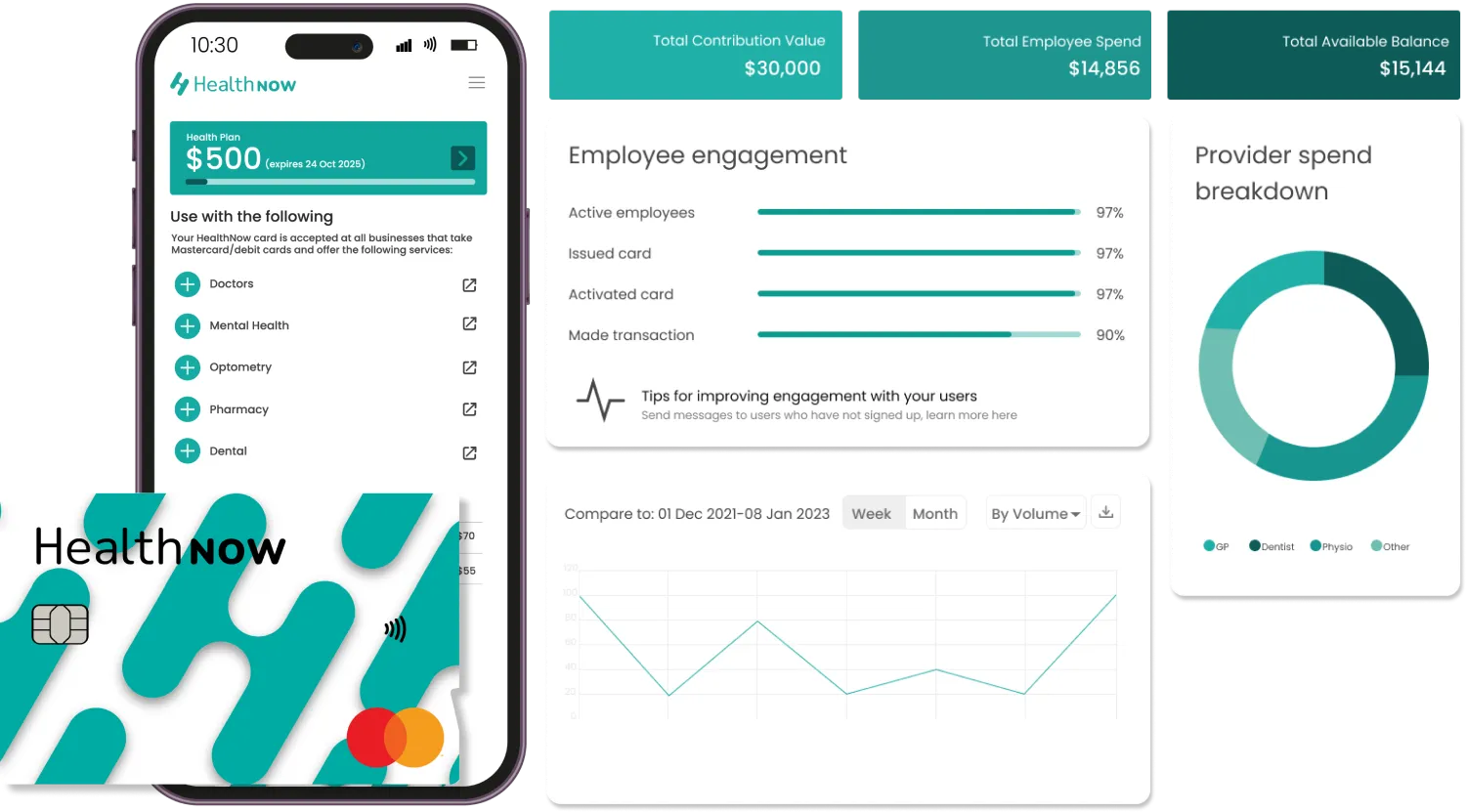Maintaining a healthy work-life balance has become increasingly crucial and a big point of focus in today’s fast-paced and demanding work environments. Paired with unemployment rates being at record lows and employee benefits being a key consideration in whether a prospective employee will choose your organisation for employment or will sign with someone else, many businesses have shifted their focus on supporting work-life balance in the workplace. And the outcome? It may be having more benefits than companies initially projected. Here’s a look into how supporting your employee’s work-life balance can benefit your business in the long term – as well as a simple and practical way to achieve this promptly.
First: What Is Work-Life Balance?
First to address an important question: what defines work-life balance, anyway? Interestingly, it has much less to do with “equal” time distribution between a person’s work, personal time and family – and more with having the ability to lead meaningful lives outside of the workplace.
More specifically, it can be seen as the equilibrium or harmony an individual achieves between their professional or work-related commitments and their personal life, which includes family, relationships, leisure activities, and personal well-being. The concept of work-life balance acknowledges that work is an essential part of life, but it should not overshadow or compromise other significant aspects of one’s well-being. It recognises the importance of creating boundaries and managing time effectively to ensure that work commitments do not infringe upon personal time and vice versa.
Achieving work-life balance is a highly individualised pursuit as people have diverse priorities and obligations. It involves finding the right combination of time, energy, and attention dedicated to work and personal life to foster overall satisfaction, happiness, and well-being. Work-life balance can vary across different life stages, industries, and personal circumstances, but ultimately, it involves consciously integrating work and personal life in a manner that supports one’s overall quality of life.
Next: Does Work-Life Balance Impact Work Performance?
Unsurprisingly, the answer is yes, with numerous studies having demonstrated a positive correlation between work-life balance and work performance. When employees have a sense of control over their work (so that it doesn’t feel like it’s all-consuming) and can allocate sufficient time to personal responsibilities and leisure activities, they experience reduced stress levels and increased job satisfaction. This, in turn, translates into enhanced focus, engagement, and productivity on the job. Employees who feel they have time to recharge and tend to personal needs are better equipped to bring their best selves to work, leading to improved performance and outcomes.
Satisfaction at Home and Work Performance
General satisfaction at home plays a pivotal role in an employee’s overall well-being and, consequently, their work performance. Achieving a healthy work-life balance allows individuals to nurture their relationships, pursue personal interests, and maintain a fulfilling personal life. Research shows that employees who experience satisfaction and fulfilment in their personal lives are more likely to exhibit higher levels of job satisfaction and commitment to their work. Conversely, when personal life is compromised due to work-related demands, it can result in increased stress, burnout, and decreased job performance.
Work-Life Balance and Personal Health
The impact of work-life balance extends beyond work performance and seeps into an individual’s overall health and well-being. Chronic work-life imbalance can lead to physical and mental health issues, such as fatigue, anxiety, and depression. These health challenges not only impact an employee’s personal life but also have significant implications for their work engagement and productivity. Conversely, employees who maintain a healthy work-life balance experience improved physical and mental well-being, leading to higher energy levels, better focus, and increased job satisfaction.
Work-Life Balance and Work Satisfaction
Work-life balance is also closely intertwined with work satisfaction. Employees who can effectively manage their work and personal responsibilities report higher levels of job satisfaction. When individuals have time for family, hobbies, self-care, and leisure activities, they feel a greater sense of fulfilment and contentment. Conversely, a lack of work-life balance can result in feelings of frustration, dissatisfaction, and a perception of work as a source of stress and burden. Organisations that prioritise work-life balance initiatives demonstrate their commitment to employee well-being, leading to increased job satisfaction and loyalty.
Work-Life Balance and Staff Turnover Rates
High staff turnover rates can be detrimental to an organisation’s stability and success. Work-life balance plays a significant role in employee retention. Employees who struggle to balance work and personal life commitments may become dissatisfied and seek opportunities elsewhere. Conversely, organisations that prioritise and support work-life balance initiatives are more likely to retain talented employees, reducing turnover rates and associated costs. Providing flexibility, promoting work-life integration, and supporting employee well-being contribute to a positive work culture that fosters loyalty and longevity.
Employer Aid: An Easy And Simple Way To Further Support Work-Life Balance
With leading a meaningful life outside of work being integral to achieving a feeling of work-life balance, it’s important to have your health in order so you can freely pursue your goals without being held back by pain, injury or other discomforts. One way that employers can support their employees in achieving this is with employer aid payments.
Employer aid gives employees an annual financial contribution – the sum of which is set by their employer – to be used exclusively for health services and products. While health-focused monetary ‘bonuses’ cannot be tracked in terms of how they are spent, employer aid payments are delivered to an employee’s digital card on their phone, accessed via the HealthNow platform. The employer can set limits on which service sectors their employees can access if they wish, otherwise, employees will have full access to HealthNow’s suite of medical and health providers – from optometrists to pharmacies to mole maps, nutrition services, mental health care and much more.
One of the drawcards of HealthNow’s employer aid program is that it contributes to a greater sense of understanding and support by the employer, with the system designed to recognise that a person’s unique definition of “health” can look very different from their neighbour – and the care they receive should match their needs, instead of trying to fit people and their health concerns into a one-size-fits-all category.
For many, health isn’t the textbook “reactive” definition, like when you’re already sick and need to see a doctor for antibiotics. Instead, often it is about addressing parts of a person’s lifestyle that are wearing them down and making them more vulnerable to illness, whether that’s physical, mental or emotional. Therefore, employees can directly address the factors that may be impeding their ability to achieve a greater sense of work-life balance. This can look like working with a nutritionist – or a naturopath – or a psychologist – or an exercise physiologist. Simply put, it’s about having the freedom to choose who you want to work with in the health realm without strict, limiting terms.
And the benefits to businesses are plenty, for those who have a long-term focus. Improved health and employee satisfaction typically translate to improved employee productivity, higher retention rates, greater leverage for new employee acquisition in today’s competitive market, reduced absenteeism and presenteeism rates – and much more.
Ready to take the next step to effectively supporting your employees to look after their health? Get started with HealthNow today.







